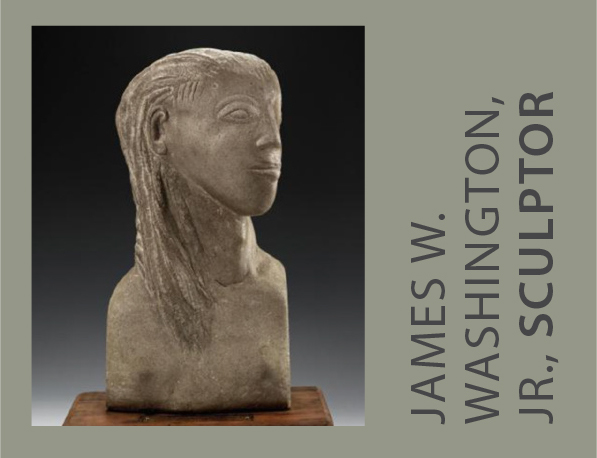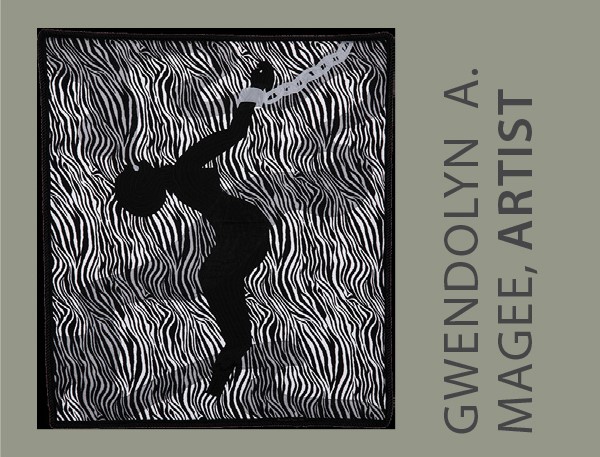If you have had the chance to read the February 2021 Learn.Connect.Discover newsletter, hopefully your curiosity was piqued by the Black Americans we featured in the cover graphic. Using our online database, Gale Biography in Context, we have pulled together short biographies about each of these individuals to share their accomplishments and contributions to society.

Garrett Augustus Morgan was born March 4, 1877, in Paris, KY and died July 27, 1963, in Cleveland, Ohio. Morgan was a self-educated and creative individual whose inventions contributed to greater safety and order in our society. He pursued an early interest in things mechanical to develop inventions of surprising technological complexity, considering the fact that he received no formal education beyond the fifth grade. Morgan showed an astute business sense as well, establishing profitable and long-lived companies to manufacture and market his inventions. Throughout his career, his inventions and activities revealed a deep concern with the safety and welfare of his fellow citizens. Morgan was inducted into the National Inventors Hall of Fame in recognition of his inventions of the gas mask and the three-way traffic signal. The National Inventors Hall of Fame honors individuals, both living and dead, whose work has changed society and improved the way we live.
“Garrett Morgan.” Contemporary Black Biography, vol. 1, Gale, 1992. Gale In Context: Biography, link.gale.com/apps/doc/K1606000424/BIC?u=lom_mnbl&sid=BIC&xid=0f172ed1. Accessed 4 Feb. 2021.

Mary Edmonia Lewis, or “Wildflower,” was born in 1844, in Greenbush, NY and died in 1907, in London, England. The child of an African American father and Native American mother, Lewis labored under a dense cloud of discrimination throughout her career. Despite the obstacles she faced, she was able to leave a legacy as an important sculptor of the neo-classical style popular during part of the 1800s. More than 100 years after the prime of her career, Lewis holds a place in the pantheon of artists that transcends race and gender. While she was active, she was frequently known as “that Negro artist” or “that woman artist” by admirers and detractors alike, drawing attention away from her skill. Only a fraction of her work has survived, but the respect that work now commands testifies that Lewis’s talents defied the petty suspicions and biases of her critics.
“Edmonia Lewis.” Contemporary Black Biography, vol. 10, Gale, 1995. Gale In Context: Biography, link.gale.com/apps/doc/K1606000339/BIC?u=lom_mnbl&sid=BIC&xid=f96276a2. Accessed 4 Feb. 2021.

Amiri Baraka (1934-2014) was one of the most controversial writers in twentieth-century America, one whose influence on African-American literature was profound. Plays, poems, novels, essays, short stories, jazz operas, and music criticism are all included in his body of work, and all served as vehicles for his outspoken social and political commentary. According to Dictionary of Literary Biography contributor James A. Miller, Baraka is “a protean personality, fond of manifestos and vehement repudiations, [who] has shifted guises and discarded identities with such astonishing rapidity that critics have often been frustrated, suspended in the act of defining a man who is no longer there, while his admirers have been left abandoned or challenged to readjust themselves to his new position.” Maya Angelou once commented that Baraka was the world’s greatest living poet.
“Amiri Baraka.” Contemporary Black Biography, vol. 38, Gale, 2003. Gale In Context: Biography, link.gale.com/apps/doc/K1606002377/BIC?u=lom_mnbl&sid=BIC&xid=45d47ee5. Accessed 4 Feb. 2021.

Amy Sherald (born in 1973) is an American artist who became known to many people outside the art world when her portrait of former first lady Michelle Obama was revealed in 2018. Among those who follow American artists, Sherald is well-known as a portrait artist whose style is distinctly her own. Sherald is a graduate of Maryland Institute College of Art.
“Amy Sherald.” Gale Biography Online Collection, Gale, 2018. Gale In Context: Biography, link.gale.com/apps/doc/K1650011033/BIC?u=lom_mnbl&sid=BIC&xid=1294dd16. Accessed 4 Feb. 2021.

Alma Thomas was born in Columbus, Georgia, on September 22, 1891 and died in Washington D.C. on February 24, 1978. Alma Thomas’s vibrant abstract canvases, filled with color and light, reflect the engagement of a vital personality with the world of art, nature, and ideas throughout a long and varied life. In 1924 she became the first graduate of Howard University’s newly formed art department. In 1972 Thomas became the first black woman to be given a solo exhibition at the Whitney Museum of American Art in New York City. But it is the unbridled energy with which Thomas embarked on a full-time career as a painter at the age of 69 that stands alongside her paintings as perhaps her most remarkable achievement.
“Alma W. Thomas.” Contemporary Women Artists, Gale, 1999. Gale In Context: Biography, link.gale.com/apps/doc/K2402000325/BIC?u=lom_mnbl&sid=BIC&xid=0d146e13. Accessed 4 Feb. 2021.

Alexander Miles (1838-1918), who contributed to the elevator industry, was an African-American inventor of the late 19th century who transcended racial barriers in the United States. Miles, born in Duluth, Minnesota, designed an elevator that was able to open and close its own doors and the elevator shaft doors. Previously, the opening and closing of the doors of both the shaft and the elevator had to be completed manually by either the elevator operator or by passengers, contributing greatly to the hazards of operating an elevator. The influence of Miles’s elevator patent is still seen in modern designs, since the automatic opening and closing of elevator and elevator shaft doors is a standard feature.
Retrieved from: https://www.invent.org/inductees/alexander-miles

Mark E. Dean (born 1957) is one of the top engineering minds at the International Business Machines (IBM) Corporation, and one of just fifty prestigious fellows at the legendary company. Dean’s area of expertise lies in computer systems, and he made his first mark in the industry in the early 1980s, when he and a colleague developed one of the pieces of internal architecture that allows a computer to communicate with a printer and other devices. Of the nine patents for IBM’s revolutionary personal computer (PC) introduced in the 1980s, Dean is the holder of three. He is also the recipient of numerous honors and professional accolades, including a place in the National Inventors’ Hall of Fame.
“Mark E. Dean.” Contemporary Black Biography, vol. 35, Gale, 2002. Gale In Context: Biography, link.gale.com/apps/doc/K1606002195/BIC?u=lom_mnbl&sid=BIC&xid=60d9ab5f. Accessed 12 Feb. 2021.

Sarah Boone (1832-1904) is one of the first Black women to be granted a US patent. The dressmaker from New Haven, Connecticut, received Letters Patent No. 473,653 in April of 1892 for an improvement to the ironing board. Boone built a foldable table with padding and a narrowed end so that sleeves and trousers could be pressed without creases. The collapsible legs and padding on a curved end were three elements that became ubiquitous in an item manufactured millions of times over around the world over the next century. Boone’s name remains virtually unknown, yet General Electric, the company established the same year that Boone received her patent, collected royalties off the incandescent light bulb patented by Thomas Edison for decades.
“Sarah Boone.” Contemporary Black Biography Online, Gale, 2020. Gale In Context: Biography, link.gale.com/apps/doc/K1606008678/BIC?u=lom_mnbl&sid=BIC&xid=cf8e8817. Accessed 12 Feb. 2021.

Joycelyn Elders was named the first woman and first black director of the Department of Health in Arkansas in 1987, and in 1993 she became the first black and the first woman U.S. Surgeon General. The honor came under President Bill Clinton’s administration. Elders is a crusader for health reform and advocates health care for all citizens. Her progressive stand on sex education in schools ultimately led to her being dismissed from the federal position late in 1994. Joycelyn Jones Elders, the oldest of eight children, was born on August 13, 1933, in Schaal, Arkansas, to indigent sharecroppers Curtis and Haller Jones. During her childhood, Elders worked with her parents and sisters and brothers as field hands in this small farming community, a town so small it did not appear on a map. She toiled in the fields and experienced poverty and deprivation; her family had to live in inadequate housing with no plumbing. In rural Arkansas, she suffered the hostilities, humiliations, and indignities of Southern segregation. She walked miles to school, where the children studied in old, dilapidated school buildings with outdated textbooks discarded by white schools. Blacks were restricted to their own restrooms and drinking fountains. While growing up, she never saw a doctor, nor did she seriously think about can u buy xanax over the counter in Canada becoming one.
“Minnie Joycelyn Elders.” Notable Black American Women, Gale, 1996. Gale In Context: Biography, link.gale.com/apps/doc/K1623000584/BIC?u=lom_mnbl&sid=BIC&xid=474a55ae. Accessed 12 Feb. 2021.

“It is a wonderful thing to have been born in the world under adverse circumstances and realize your potential,” artist James W. Washington, Jr. (1909-2000) told Deloris Tarzan Ament in an interview for her book Iridescent Light: The Emergence of Northwest Art. As a child growing up in the segregated South, Washington endured poor education, racially fueled terrorism, and poverty. He found refuge in art. In a career that spanned nearly 75 years, Washington demonstrated the connection between creativity and spirituality. “To me, art is a holy land,” he told Ament, “where initiates seek to reveal the spirituality of matter.” Along the way the self-taught Washington established himself as one of the most important African American artists to emerge from the twentieth century.
“James W. Washington, Jr.” Contemporary Black Biography, vol. 38, Gale, 2003. Gale In Context: Biography, link.gale.com/apps/doc/K1606002429/BIC?u=lom_mnbl&sid=BIC&xid=f39a9d78. Accessed 12 Feb. 2021.

From the late 1890s through the 1940s, W. E. B. Du Bois (1868-1963) was one of the leading black intellectuals and the foremost champion of equal rights for blacks in the United States. At a time when many black Americans sought to improve their status by adapting to the ideals of white society and tolerating discrimination and segregation, Du Bois was a tireless proponent of unconditional equal and civil rights for all blacks. As a social scientist, he was also a pioneer in documenting historical and social truths about blacks in the United States. In eloquent and forceful writings in a variety of genres, he was the first to write of a distinct black consciousness, which he described as the peculiar “two-ness” of being both a black and an American. Du Bois’s legacy has served as the intellectual foundation of the modern-day black protest movement. He is regarded by many as a prophet, whose words inspire oppressed people throughout the world in their struggle for civil rights. In 2017, a framed photograph of Du Bois was placed in the town hall of Great Barrington, Massachusetts, where he was born in 1868.
“W. E. B. Du Bois.” Contemporary Black Biography, vol. 3, Gale, 1992. Gale In Context: Biography, link.gale.com/apps/doc/K1606001149/BIC?u=lom_mnbl&sid=BIC&xid=34b2e01f. Accessed 12 Feb. 2021.

Marie Van Brittan Brown (1922-1999) was an African American nurse and inventor who patented the first home security system. Brown also invented the first closed-circuit television system that was used for home monitoring. Brown came up with the idea for her system in response to the slow police response time in her New York City neighborhood. She and her husband, Albert, installed their system in their home and filed a patent for the invention in 1966. Although the Browns never marketed their invention, their patent was used as the basis for future home security systems, and earned Marie Van Brittan Brown an award from the National Scientists Committee.
“Marie Van Brittan Brown.” Gale Biography Online Collection, Gale, 2019. Gale In Context: Biography, link.gale.com/apps/doc/K1650011472/BIC?u=lom_mnbl&sid=BIC&xid=4aa869bf. Accessed 12 Feb. 2021.

It is difficult to imagine how today’s advanced communications networks would function without the work of James E. West (born 1931). One of the world’s leading acoustical engineers, he is renowned above all for co-developing the electret microphone, a small, low-cost device now found in the vast majority of telephones and voice recorders. A longtime employee of Bell Labs in New Jersey, West is also known for his strong support of programs designed to facilitate minority participation in engineering and the sciences.
An enthusiastic mentor to students and younger colleagues, West won a host of awards over the years, including induction into the National Academy of Engineering in 1998 and the National Inventors Hall of Fame in 1999. He was also the recipient of the ASA’s 2006 Gold Medal Award. In the citation that accompanied that honor, he was called “a sterling colleague, collaborator, friend, and mentor,” as well as “an extraordinary human being.”
“James E. West.” Contemporary Black Biography, vol. 87, Gale, 2011. Gale In Context: Biography, link.gale.com/apps/doc/K1606005150/BIC?u=lom_mnbl&sid=BIC&xid=b63f6535. Accessed 12 Feb. 2021.

The life experiences of Maya Angelou–author, poet, actress, singer, dancer, playwright, director, producer–became the cornerstone of her most acclaimed work, a multivolume autobiography that traces the foundations of her identity as a twentieth-century American black woman. Beginning with the best-selling I Know Why the Caged Bird Sings, Angelou’s autobiographical books chart her beginnings in rural segregated Arkansas and urban St. Louis, her turbulent adolescence in California through her adult triumphs as a performing artist and writer, her work in the civil rights movement, her travels to Africa, and her return to the United States. “One of the geniuses of Afro-American serial autobiography,” according to Houston A. Baker in the New York Times Book Review, Angelou has been praised for the rich and insightful prose of her narratives and for offering what many observers feel is an indispensable record of black experience. Author James Baldwin wrote on the publication of I Know Why the Caged Bird Sings: “This testimony from a Black sister marks the beginning of a new era in the minds and hearts and lives of all Black men and women.” In 2013 she published her last book, Mom & Me & Mom, which tells the story of her relationship with her mother. Angelou was 86 when she died at her home on May 28, 2014.
“Maya Angelou.” Contemporary Black Biography, vol. 15, Gale, 1997. Gale In Context: Biography, link.gale.com/apps/doc/K1606000787/BIC?u=lom_mnbl&sid=BIC&xid=c0858579. Accessed 15 Feb. 2021.

In 1989, at the age of 46, Gwendolyn A. Magee (1943-2011) began her craft of quilting after deciding she wanted to make a special gift for each of her daughters to take with them to college. She took a six-week course in quilting and over the years, in addition to her mastery of quilting, she moved into abstract art and other art forms. Mrs. Magee traced her quilting style back to Africa and discovered that quilting played a vital role in the survival of black families in both slavery and Reconstruction eras.
Mrs. Magee has been recognized and honored for her work, both locally and nationally, receiving such awards as the 2011 Governor’s Award for Excellence in the Arts. Her work is housed in the permanent collections of the Smithsonian American Art Museum, the Mississippi Museum of Art and the Michigan State University Museum of Art. The Mississippi Museum of Art selected Mrs. Magee as its sole community representative for the 2010 IMLS National Medal for Museum and Library Service ceremony which was presented to her by First Lady Michelle Obama in Washington, D.C.
“BOARD RECOGNIZES LEADERS IN DIVERSITY, HONORS BLACK HISTORY MONTH.” States News Service, 17 Feb. 2012. Gale In Context: Biography, link.gale.com/apps/doc/A280987150/BIC?u=lom_mnbl&sid=BIC&xid=82282ca3. Accessed 17 Feb. 2021.

Although Lewis Latimer (1848-1928) was born before the Civil War, he was born free, unlike most African-Americans of his day. His father had escaped slavery in Virginia and moved to Boston, where abolitionists purchased his freedom. After the Civil War began, Latimer joined the Union Navy as soon as he reached the minimum age. At the end of the war, he found a job with a group of patent lawyers in Boston, starting out as an office boy and soon displaying a natural talent for the creating the technical drawings that illustrate patents. After buying a set of second-hand drafting tools, Latimer succeeded in getting a promotion and a raise, eventually becoming head draftsman for the firm. During this time, Latimer met and made friends with Alexander Graham Bell, who was in the process of inventing the telephone. At Bell’s request, Latimer illustrated the workings of the telephone’s components, and his drawings appeared in the patent Bell obtained in 1876.
In 1881 and 1882, Latimer patented methods for manufacturing superior carbon filaments. With Latimer’s inventions, Maxim’s electric light bulbs were less expensive to make, and lasted much longer. Using Latimer’s patents, his employers expanded their business and began building lighting systems for streets and railroad stations throughout the world. Latimer was responsible for setting up manufacturing plants and installing street lighting in the United States, Canada, and Britain. He also developed a new wiring scheme, using parallel circuits, for street light systems, so that when one lamp went out the others would remain lit.





Recent Comments